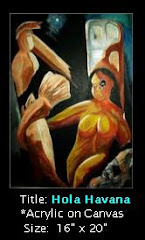In the entertainment world, when it comes to famous men with the first name Humphrey – you can count them on the fingers of one hand.
Even if it is missing three fingers.
Everyone thinks of Bogart, of course. But many - particularly from Britain - will come up with Humphrey Lyttleton – famed post-war jazz musician and a BBC radio personality for 4 decades.
Americans are likely less aware of Lyttleton than our cousins across the pond, but hopefully today’s blog will do a little to rectify that.
While I’ve known of `Humph’s’ jazz recordings for decades, and was vaguely aware of his BBC career, I confess I’d not thought of him in many years.
That is, until one of my regular readers (Lucy from Montana – Thanks!) of my `other’ blog (Avian Flu Diary) sent me a Youtube video of some music she thought I’d enjoy.
The piece was `Bad Penny Blues’, which became the first jazz recording to break into Britain’s top 20 (clung tenuously to #19 for 6 weeks!) in 1956.
Humph, who was born and educated at Eton (his father was a house master there) picked up the trumpet in 1936 (at the age of 15) and twelve years later – after exiting the service following WWII – Lyttleton joined George Webb’s Dixielanders jazz band.
Lyttleton played jazz, and maintained a `day job’ as a cartoonist for the Daily Mail until 1956. Lyttleton formed his first jazz band in the late 1940s, and after achieving notoriety in the mid-1950s, toured successfully for decades.
Humph often teamed up with other jazz greats like Mr. Aker Bilk, and George Melly. Here is a clip with Mr. Aker (‘Stranger on the Shore’) Bilk, and the Harlem Ramblers from 1982 doing Avalon (written by Al Jolson).
In 1967 Lyttleton began a 40-year stint as presenter on BBC radio’s Best of Jazz radio show, using his near encyclopedic knowledge of jazz to great advantage. Along the way, Humph penned 8 books, and numerous magazine articles on jazz.
In 1972, he was picked to chair the panel of what would become a hugely popular radio show; I'm Sorry I Haven't A Clue.
The show was billed as `an antidote’ to conventional panel shows which were ubiquitous on radio and TV, and consisted of a chairman (exclusively Humph after the first season) who gave the panel (4 comedians working in pairs) `silly things to do’.
His dry British wit, exquisitely bored delivery, and his ability to make delightfully risqué comments that could be innocently interpreted – and thus able to get past the censors – helped to make the show a smash.
A Taste of ISIHAC, but fear not, there will be more to come:
There is a Humphrey Lyttleton Official website, where you can delve deeper into his career. But today is all about video clips of Humph you can enjoy.
First stop is a 1 hour (albeit split into 6 parts on YouTube) documentary from The South Bank Show, called A Tribute to Humphrey Lyttleton.
A few choice videos of Humph playing include:
For those appreciative of British humor (as am I), we’ve hundreds of short (under 10 minute) snips from ISIHAC’s long broadcast history available on Youtube.
You can access them HERE.
We lost this jazz great, radio icon, and historian in 2008. You can read a detailed, and loving, tribute to the man and his career in his obituary that appeared in UK’s Independent Newspaper.
Humphrey Lyttleton. A remarkable life, well lived.
And we are all the better for it.














